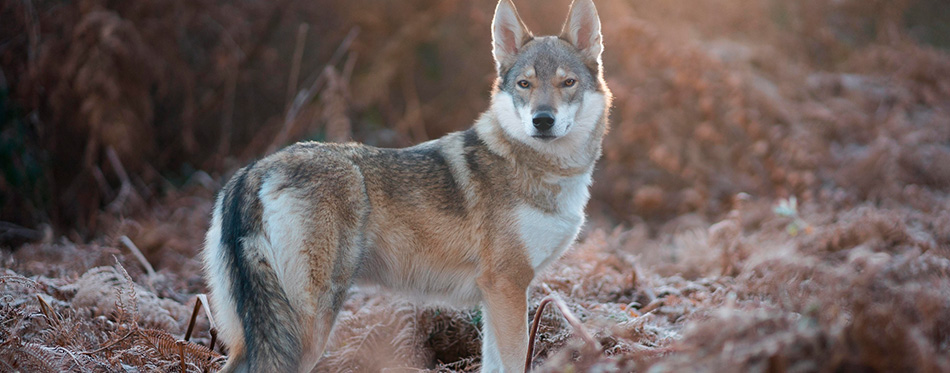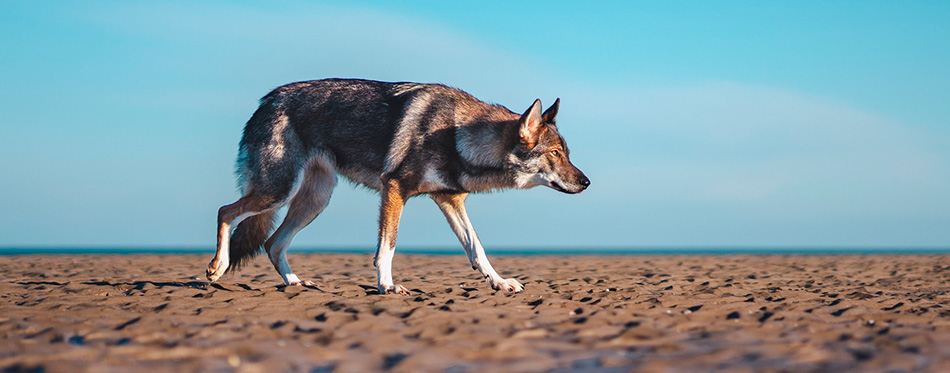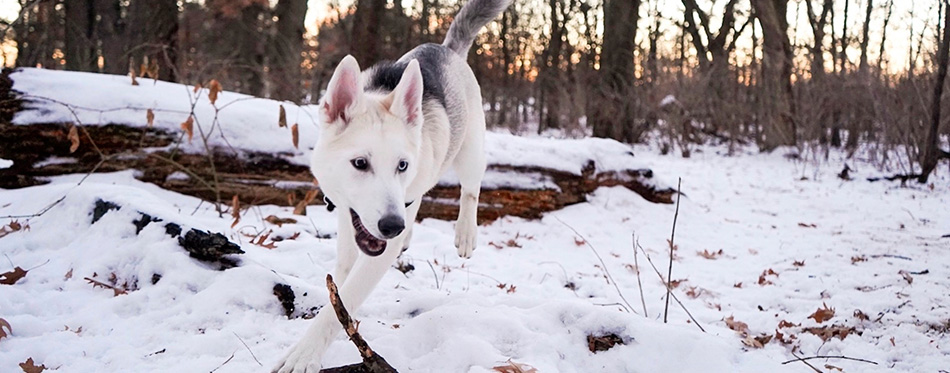Aside from the fact that they look so adorable and very unique, wolf dogs are also mysterious and super intriguing. There are those who say that crossbreeding a wolf and a dog is not only unethical, it also shows one’s utter neglect for evolutionary development. Many people claim that these hybrids are not worthy of trust and are dangerous. On the other hand, proponents of wolf dog hybrids say they can become healthier, stronger, and smarter pets than domestic canines. Before you put forth your two cents, learn more about these 10 facts about the wolf dog.

1. Wolf Dogs are Part-Wolves and Part-Dogs
In its strictest definition, a wolf dog should be 50% wolf and 50% domestic dog. The definition can get a little more challenging if you consider the wolf’s ancestry. For a wolf dog to earn such a classification, breeders must prove that the wolf used in the crossbreeding is a direct descendant of a 100% wolf within the immediate past 5 generations.
While it is also true that domestic dogs and wolves are interfertile, Mother Nature forbid them to interact in a more “natural” way. Thousands of years of domestication have rendered the dog to be tamer and less aggressive than wolves. Hence, it is almost impossible for them to mate in the natural world. Besides, wolves are territorial and super aggressive.
2. There is Some Controversy in Wolf Dogs
As mentioned in the beginning of this article, there is an ongoing debate regarding wolf dogs. On one hand are those that are against it, saying that it is a very dangerous undertaking. Proponents of the hybrid say that they can harness the trainability, loyalty, and affection of the domestic dog in the hybrid. The main question here is whether or not wolf dogs can make good pets.
Unfortunately, it is very difficult to predict how much of a “wolf” is in the hybrid and how much “dog” is there. Almost everyone has a clear understanding of what a dog is and its fundamental behaviors. But, not everyone has a deep understanding of the behavior of wild wolves. For very patient and persevering pet parents, a wolf dog may be an exceptional challenge for them. But for the average pet parent, raising a wolf dog is not worth the patience, effort, and time.
3. Wolf Dogs Cannot Subsist on Your Ordinary Kibble or Canned Dog Food
Dogs can eat almost anything that you put in their food bowl. Whether it is dog kibbles or wet dog food, domestic dogs are already attuned to the flavors and textures of commercial pet food. However, if you have a wolf dog, there is only one diet that they expect from their food bowl: raw food.
When we talk about raw food, we often think about including fruits and vegetables because of their vitamins and minerals. However, wolves are never known to subsist on such food items. What they need are raw whole prey animals. They can feed on whole rabbits, chicken, and other animals. If this is something you cannot stomach, you can provide a wolf dog with at least 2 pounds of raw meat every day.
Related Post: Dry Dog Food
4. It is Alright to Let Your Wolf Dog Pet to Lick Your Teeth
In the wild, wolves show their appreciation and affection for one another by licking the teeth of one another. For them, it is a sign of recognition of being a member of the pack. Hence, if the wolf dog licks your teeth, you should feel elated since it looks at you as a fellow pack member.
If you dissuade or prevent the wolf dog from doing such a “ritual”, they may interpret this as rejection. You are rejecting the wolf dog from your pack. This is no way to establish a trusting relationship with this dog.

5. You Cannot Vaccinate a Wolf Dog Against Rabies
Rabies vaccines are species-specific. The majority of the formulations is for dogs. However, manufacturers have yet to formulate a vaccine that is specific for wolf dogs. Giving a dog-specific rabies vaccine may only confer protection for the dog “component” of the hybrid, but not the “wolf” part.
The implications of this are immense, indeed. If someone gets bitten by a wolf dog that has the rabies virus, there is the strong chance that the virus can get transmitted. This is one of the major dilemmas that wolf dog owners and potential pet parents have to think about. Public safety is a paramount concern.
6. Puppies of the Same Litter May Show Different Characteristics
Very few people can understand the true behaviors of wild wolves. Hence, one can never be too sure about the temperament and behavioral characteristics of wolf dogs. Everything boils down to the genetic composition of the resulting litter. One has to understand that there is a gene that codes for each characteristic or trait. The emergence of a trait is dependent on whether the gene is recessive or dominant.
If the gene is more dominant in the wolf parent, then you can expect this trait on the puppy, too. If a particular trait is recessive, you will need both wolf and dog parents to have the same recessive trait so that this will show in the wolf dog. The bottom line is that there is no way you can predict how your wolf dog will look like until adulthood.
7. Wolf Dogs Need Plenty of Space
It is obvious that wolf dogs cannot live in a cramped space. In the wild, they have plenty of space to roam around. This is important because they are always on the prowl. They love to run and play hide-and-seek with their pack members. Wolf dogs like to climb, too.
Wolf dog enthusiasts recommend a minimum space of 4,225 square feet or roughly 65 feet on all 4 sides. It is also important that there are trees within the enclosure itself as well as plenty of obstacles for the wolf dog to try to solve. The only way you can meet this requirement is if you live in the woods or the backcountry.
8. Wolf Dogs Don’t Bark; They Howl
When it comes to vocalizations, wolves have a very unique way of communicating with others. They howl. While there are breeds of dogs that also howl, the majority of them bark. You might think that the wolf dog will communicate with others using a combination of barking and howling. Unfortunately, this is not the case.
Wolf dogs tend to howl a lot. They do this to communicate with either a wolf or another wolf dog. It also howls to warn other dogs not to stray into its territory. In a way, the howling is almost similar to a dog’s barking. Your only concern will be that of your neighbors. They may not like the idea of breaking the steely silence of the night with a classic wolf howl.
9. Pomeranians Were the First Dog Breed to be Crossed with Wolves
One of the most interesting facts about wolf dog hybrids is that it is not a new phenomenon. As a matter of fact, as early as the 18th century, people have already begun to entertain the idea of crossbreeding a wild wolf with a domestic dog. It would be safe to assume that these people sought to cross a wolf with a dog that has almost the same characteristics. For instance, Samoyeds, Alaskan Malamutes, and Siberian Huskies all bear uncanny similarities with wild wolves.
Instead, the very first domestic dog that man crossbred with a wild wolf was a Pomeranian. You’d be interested to know that the Poms a couple of centuries ago were large dogs, instead of the purse puppies we know them today. Eighteenth century Pomeranians looked more like the Artic breeds that pull sleds over harsh snowy terrain.

10. Not All States Recognize Wolf Dog Hybrids
It is very easy to see why not all states in the US recognize or consider wolf dogs as legal. Establishing the lineage of a domestic dog is easy. What makes it very challenging is determining the genetics of the wolf. If you were to crossbreed a purebred dog with a 100% “pure” wolf, then you have what they call the F1 hybrid. You get 50% of the genetic makeup of each parent. If, however, you crossbred an F1 hybrid with another “pure” wolf or purebred dog, then you get a second generation of wolf dog. This means that you no longer have a 50-50 split.
It is difficult to establish how much of a wolf and how much of a dog should be present for the wolf dog to be considered as such. This confuses lawmakers such that many pass legislations outlawing the breeding and ownership of wolf dog hybrids. In some states, there may be restricted ownership. It is often wise to check your state’s legislations on wolf dogs before you bring one home.
There’s no doubt that wolf dogs are an exotic hybrid. With these 10 facts, you should be able to determine whether it is a good idea to have a wolf dog as a pet or not.
Sources:
- Facts About Wolf Dog Hybrids – Cuteness
- 8 Differences Between Dogs and Wolves – PetMD

